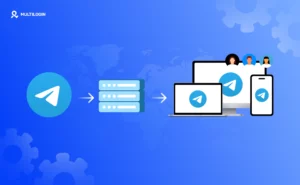Table of Contents
Device Emulation
Device emulation is a powerful tool in the toolkit of developers, testers, and digital marketers.
It allows you to simulate different devices and environments, ensuring your applications and websites perform flawlessly across various platforms.
What Does Emulated Devices Mean?
Emulated devices are virtual representations of physical devices created through software. These emulations mimic the hardware and operating system configurations of real devices, enabling developers to test and optimize their applications without needing the actual physical devices.
This is especially useful for ensuring compatibility across a wide range of devices, from different models of smartphones to tablets and desktops.
What Are Emulated Devices?
Emulated devices are essential tools in software development and quality assurance. They replicate various aspects of real devices, including:
- Screen size and resolution
- Operating system and version
- Device-specific features and functionalities
Using emulated devices, developers can simulate different user environments to identify and fix issues before releasing their applications to the public. This helps in delivering a consistent user experience across all devices.
How to Add Emulated Devices in Chrome
Google Chrome provides robust tools for device emulation, making it easy for developers to test their websites and applications.
Here’s a step-by-step guide to adding emulated devices in Chrome:
- Open Chrome DevTools: Press Ctrl+Shift+I (Windows/Linux) or Cmd+Option+I (Mac) to open Developer Tools.
- Enter Device Mode: Click the device toggle icon in the top-left corner of the DevTools pane or press Ctrl+Shift+M (Windows/Linux) or Cmd+Shift+M (Mac).
- Open Device Settings: Click on the three dots menu in the top-right corner of the DevTools pane and select “More tools” > “Sensors.”
- Add Custom Device
- Click on the “Add custom device” button.
- Fill in the details for the device you want to emulate, such as name, screen resolution, and user agent string.
- Click “Add” to save the device.
- Select the Emulated Device: From the device list dropdown, select the custom device you added.
Now, Chrome will emulate the specified device, allowing you to see how your website or application performs on it.
How to Emulate Mobile Devices in Chrome
Emulating mobile devices in Chrome is straightforward and enables you to test the mobile responsiveness of your website or application:
- Open Chrome DevTools
Press Ctrl+Shift+I (Windows/Linux) or Cmd+Option+I (Mac).
- Enter Device Mode
Click the device toggle icon or press Ctrl+Shift+M (Windows/Linux) or Cmd+Shift+M (Mac).
- Select a Mobile Device
Use the device list dropdown to choose from predefined mobile devices like iPhone X, Pixel 2, Galaxy S9, etc.
- Interact with the Emulated Device
Chrome will now display your website as it would appear on the selected mobile device. You can interact with the site using touch gestures and see how it responds to different screen sizes and resolutions.
Practical Applications of Device Emulation
- Web Development and Testing: Developers can test how websites and applications look and perform across different devices without needing physical access to each device.
- Mobile App Development: Emulating different mobile devices helps developers ensure their apps work perfectly on various screen sizes and operating systems.
- Digital Marketing: Marketers can test how their ads and landing pages appear on different devices to ensure optimal user experience and engagement.
- Customer Support: Support teams can replicate customer issues on specific devices to provide more accurate and efficient solutions.
Key Takeaways
Device emulation is a versatile and invaluable tool in the development and testing of web and mobile applications. It provides a cost-effective, convenient, and comprehensive way to ensure your applications deliver a consistent and high-quality user experience across a multitude of devices.
People Also Ask
BlueStacks emulates Android devices, allowing users to run Android apps on their Windows or Mac computers.
Open Chrome Developer Tools, enter device mode, and choose a mobile device from the predefined list to see how your website or app performs on that device.
Open Chrome Developer Tools, enter device mode, go to device settings, add a custom device by specifying its details, and select the device from the dropdown list.
Emulated devices are virtual representations of physical devices created through software, mimicking hardware and OS configurations for testing and development purposes.
Related Topics

Best Proxy For Telegram in 2026: A Complete Guide to Top Providers and Alternatives
Proxies for Telegram are tools that help you use the messenger